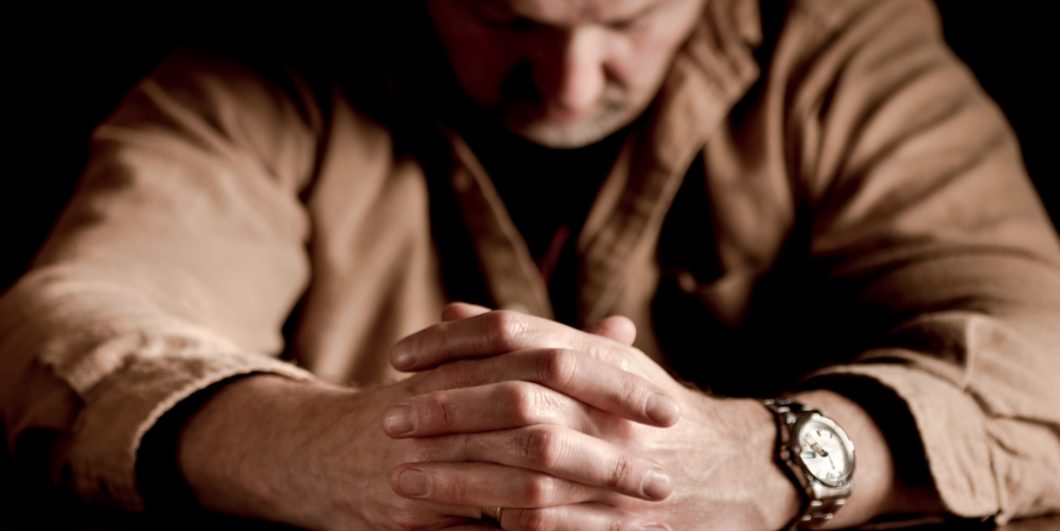A shared, underlying agreement about the dignity of the person is the gravitational center around which our polity and politics orbit.
Despair in a Decadent Republic
“Deaths of despair” tripled among working-class whites over the past 25 years. Hardly anyone noticed or cared about this until Anne Case and Angus Deaton, economists from Princeton, cataloged such deaths in their book Deaths of Despair and the Future of Capitalism. But even their analysis fails to recognize the extent of our political decadence.
The Rise of Despair
First, the facts. Deaths of despair are self-inflicted deaths due to suicide, drug overdoses, or alcohol abuse. The rate at which white men and women between the ages of 45 and 54 without college degrees (the demographic seeing the most rapid increase) died deaths of despair increased from 70 per 100,000 in 1990 to 240 per 100,000 in 2017. Nearly 170 men per 100,000 in this demographic died a death of despair in 2017, and nearly 70 women.
People subject to despair also have other maladies. Whites without college degrees are suffering more heart disease and are more obese than they used to be. They report poorer health, more pain, and more mental distress. Fewer work than in the past, and many, especially men, as Nicholas Eberstadt shows, have dropped out of the workforce. Plainly, all such maladies suggest that this group of people is, in the main, unhappier than it used to be, if we can speak of such a quaint notion as happiness.
Most other demographic groups, as well as people in other countries, have experienced almost straight-line declines in such deaths over the same period (and decreases in pain and suffering). James Rogers shows, however, that some nations, especially in the Anglosphere, have seen spikes in such deaths among working-class whites. Even some American minority groups, including Native Americans and black men, have seen increases, though nothing on the scale of whites without college.
What is happening? Case and Deaton reject popular and populist explanations for white deaths. Globalization and automation cannot explain why deaths of despair focus on whites. The working classes in other countries and minorities in America are subject to the same forces, they reason, but deaths of despair have risen mostly among whites without college degrees.
Nor do Case and Deaton blame the ready supply of opioids for deaths of despair, though they appropriately spew much venom at the cunning greed of pharmaceutical companies and their political cover industry. Supply is one side of the equation. The “demand side” shows that this white class was “fertile ground” or vulnerable to drug use. All could have turned to opioids, but for the most part, only the whites without college degrees did.
What makes whites without college different? Case and Deaton sometimes home in on questions of meaning, and the psychological conditions for social malaise and individual despair.
Declines in the quality of work, they worry, contribute to declining quality of life. Jobs are “not just source[s] of money; they are the basis for the rituals, customs, and routines of working-class life . . . Suicide happens when society fails to provide some of its members with the framework within which they can live dignified and meaningful lives.” Like peasants who took a haughty joy in living under the most powerful king in the world, members of yesteryear’s “blue collar aristocracy,” as Case and Deaton call them, found meaning in working for General Motors, the world’s greatest automaker, or one of its suppliers. Their corporations provided a horizon of meaning. Today’s menial workers like custodians or delivery drivers do not feel the same stake in the large companies they serve.
While pride in work fosters contentment, Case and Deaton peddle what I call the career mystique—the belief that careers of themselves provide meaning for one’s life. Most jobs do not do that.
Permanent Things
People seek to have an irreversible achievement in the world, and this, for most, is done through marriage and family life. The “blue collar aristocracy” took more joy in their marriages, families, and communities than in putting on hubcaps. People can put up with pretty miserable and monotonous jobs in order to serve the family for whom they are responsible. Serving a family even makes most people, and especially men, work harder and better. About 50 percent of never-married, native-born men have dropped out of the workforce, while married men without high school degrees work just about as much as single men with college degrees. Marriage matters more than any other factor in lending meaning to work.
Marriage has decayed more among whites without college than any other group in America since 1990. The percentage of married white 45-year-olds without college degrees has dropped from 75 percent in 1990 to 62 percent in 2018, according to Pew.
Suicide—and probably poor quality of life and unhappiness—affects the unmarried much more than the married. Suicide—the ultimate death of despair—is rare among the married. Only about 12 per 100,000 married people commit suicide. The comparable number among the divorced is 40 and among the single is 22. Marriage acts as a barrier to loneliness and despair. Fewer marriages among this group mean less protection from despair.
Things will probably get worse among whites without college. Suicide rates among young people spiked more than 50 percent in the decade after 2007. Marriage rates among younger people are much lower than for older groups. Among 22-24 year-olds without college, the marriage rate has plummeted from 34 percent in 2000 to 19 percent in 2016. Birthrates have declined between 15-17 percent for women without college in this generation. Church membership in this group, low among those now 45 to 54, has fallen off the cliff among young adults. What are they going to live for, without family, community, or God—without a connection to eternity?
A mystery nevertheless exists. Marriage rates are no worse among whites without college than they are for American blacks. While blacks die sooner than whites, Case and Deaton show, life expectancy among blacks is rising. Black suicide rates are lower than the rate among whites of all education levels. If marriage protects against suicide, then we should expect more “deaths of despair” among blacks than we have. Something else is also at work.
Human beings identify with their country and its government—perhaps taking pride in it or feeling that it promises something better. When politics no longer serves some citizens, they become dispirited and fatalistic or despairing. Living in a low-trust society dispirits because human beings thrive when they have trusting relationships. Part of this trust comes from seeing one’s condition improve; another part comes from stable human relationships that lend some meaning to life. Yet another comes from living in a society where citizens believe that government promotes stability through the rule of law and can be entrusted to serve the common good. Political degradation is a source of human degradation. Human beings are not degraded by habits of obedience, Tocqueville writes, but rather by “the use of power that they consider illegitimate, and obedience to a power they regard as usurped and oppressive.”
Consider Russia, with twice the suicide rate as the United States. Life expectancy declined 7.3 years between 1987 and 1994, and the total fertility rate fell from 2.0 in 1980 to 1.2 in 2000. The corruption of Russia’s regime—its loss of legitimacy under communism and the establishment of an unpatriotic oligarchy—degraded and dispirited Russian citizens. Their government was viewed as an alien force among its citizens. Many citizens suffered as a defeated nation, strangers in their own land. They had fewer kids and died younger, by a variety of means. They also became less willing to work and had less hope in the future. They were not connected to an enduring political community with a discernible past and a promising future. They lacked a homeland that recognized their suffering and their joys, that translated their hopes, fears, and loves into political action. Russians had ceased to recognize their regime as legitimate, and hence their obedience to it was a degrading submission to a usurping, almost foreign power.
Political decadence has come to America, as Case and Deaton show. The connected and fanatical seek power at the expense of their fellow citizens and against those without much effective representation in Congress. Big Pharma cuts deals with congressmen and administrators. Interest groups like doctors and hospital associations pursue wealth under the cover of providing a public good, Case and Deaton suggest. Politicians pad their pockets and protect their friends. Real problems of urban and rural America cannot be seen as the system focuses on ideology and self-perpetuation. Our institutions began with efforts to serve the common good, became professionalized as businesses, and have ended up as rackets to benefit the well-connected.
The political system that Case and Deaton lament shows little regard for the interests of whites without college, among others. People on the outs are right to despair. Yet, Case and Deaton still claim that such whites without college may despair for fear of losing their “white privilege.” Our Princeton economists show that the deck is stacked against this population, but then call whites without college “privileged.” That is no small part of the problem.
Our social science and ideology—and our multicultural project generally—blind us from noticing real problems right under our noses, discernable from a trip through rural Idaho or Appalachia or the south side of Chicago. Recognizing the connection between political degradation and human unhappiness is a good way to start building a better politics.



